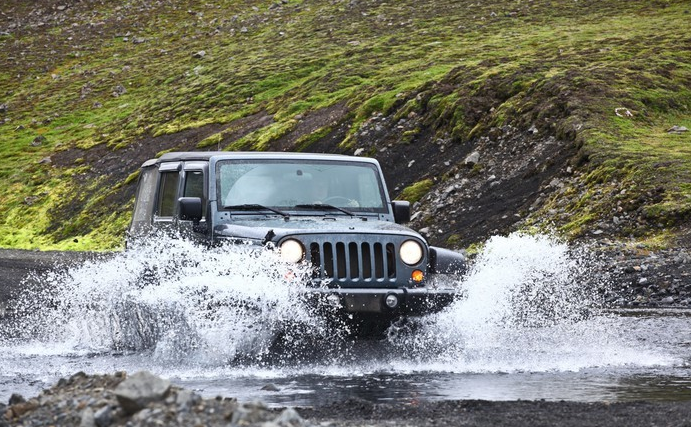
As a seasoned driver and car enthusiast, I’ve always been drawn to the rugged appeal and go-anywhere capability of 4×4 vehicles. There’s a certain thrill that comes with knowing you can confidently navigate challenging terrain, whether it’s a snow-covered road or a muddy trail. However, owning a 4×4 comes with a responsibility to understand its capabilities and limitations. It’s not just about having more power; it’s about knowing how to use that power safely and effectively.
This comprehensive guide will equip you with the essential knowledge to master your 4×4, ensuring you can enjoy its full potential while staying safe on and off the road.
Understanding Your 4-Wheel Drive System
Before venturing off the beaten path, it’s crucial to understand the type of 4WD system your vehicle has. There are several variations, each with its own engagement and disengagement procedures and operating conditions:
Part-Time 4WD: This system is designed for off-road use and provides maximum traction. However, it should not be used on dry pavement as it can damage the drivetrain.
Full-Time 4WD: This system allows for 4WD operation on both dry and slippery surfaces, making it suitable for various conditions.
Manual Shift 4WD: These systems require you to manually shift between 2WD and 4WD modes, typically using a lever or a button.
On-the-Fly Shifting 4WD: These systems allow you to switch between 2WD and 4WD while the vehicle is in motion, offering greater convenience.
Automatic 4WD: These sophisticated systems automatically engage and disengage 4WD based on driving conditions, providing seamless transitions.
To determine the specific type of 4WD system your vehicle has, consult your owner’s manual or contact your dealer.

When to Engage 4-Wheel Drive (And When to Resist the Urge)
Knowing when to engage your 4WD is key to maximizing its benefits and preventing potential damage. Here’s a breakdown:
4HI (High Range):
- Use it when:
- Driving on slippery surfaces like snow, ice, or mud at moderate to highway speeds.
- Navigating loose terrain like gravel or sand.
4LO (Low Range):
- Use it when:
- You need maximum torque for heavy pulling at low speeds, such as hauling a trailer uphill.
- Climbing or descending steep grades at low speeds, utilizing engine braking for controlled descents.
Don’t Use 4WD:
- On dry pavement: Driving a part-time 4WD system on dry pavement can cause severe damage to your drivetrain, leading to costly repairs.
- To improve braking: 4WD does not enhance braking performance on slick surfaces. In fact, it can lead to a false sense of security. Always adjust your speed and braking distance according to road conditions.

Safe Driving Practices for 4×4 Vehicles
Driving a 4×4 requires a heightened awareness of its unique characteristics and how they affect handling. Here are some essential safety tips:
Slow Down and Brake Sooner: 4WD does not defy physics. It’s essential to reduce speed and allow for longer braking distances, especially on slick surfaces.
Maintain a Safe Following Distance: The added weight and height of 4×4 vehicles can increase stopping distances. Maintain a safe following distance to allow for ample reaction time.
Avoid Abrupt Maneuvers: Sudden steering inputs or aggressive acceleration can increase the risk of rollovers, especially at higher speeds. Drive smoothly and anticipate potential hazards.
Be Mindful of Ground Clearance: While 4×4 vehicles offer increased ground clearance, it’s crucial to be aware of obstacles that could damage the undercarriage.
Understand Vehicle Dimensions: 4×4 vehicles tend to be larger and taller than standard cars. Be mindful of overhead clearances and maneuver with caution in tight spaces.
Essential Maintenance for Optimal 4×4 Performance
Proper maintenance is crucial for ensuring the longevity and reliability of your 4WD system. Here are some key maintenance practices:
Regularly Engage 4WD: Even if you don’t frequently use 4WD, engage it for a short period every few months to lubricate components and prevent seals from drying out.
Adhere to Fluid Change Intervals: Follow the manufacturer’s recommended fluid change intervals for the differentials and transfer case. These fluids are essential for maintaining proper lubrication and preventing premature wear.
Inspect and Grease Driveline Components: Regularly inspect and grease driveshaft slip joints and U-joints (if applicable) to prevent wear and ensure smooth operation.
Maintain Proper Tire Pressure and Rotation: Correct tire pressure is crucial for optimal traction and handling. Rotate tires according to the manufacturer’s recommendations to ensure even wear and maximize tire life.

Additional Resources for 4×4 Enthusiasts:
National Off-Highway Vehicle Conservation Council (NOHVCC): https://www.nohvcc.org/ – A valuable resource for off-road enthusiasts, providing information on responsible off-roading practices and trail etiquette.
United Four Wheel Drive Associations (UFWDA): https://www.ufwda.org/ – An organization dedicated to promoting responsible four-wheeling and providing educational resources for off-road enthusiasts.
Four Wheeler Magazine: https://www.fourwheeler.com/ – A comprehensive resource for 4×4 enthusiasts, offering reviews, technical articles, and off-roading tips.
Mastering your 4×4 is an ongoing journey of learning and experience. By understanding your vehicle’s capabilities, practicing safe driving techniques, and adhering to proper maintenance, you can confidently explore the open road and beyond, knowing you have the skills and knowledge to handle any adventure that comes your way.








